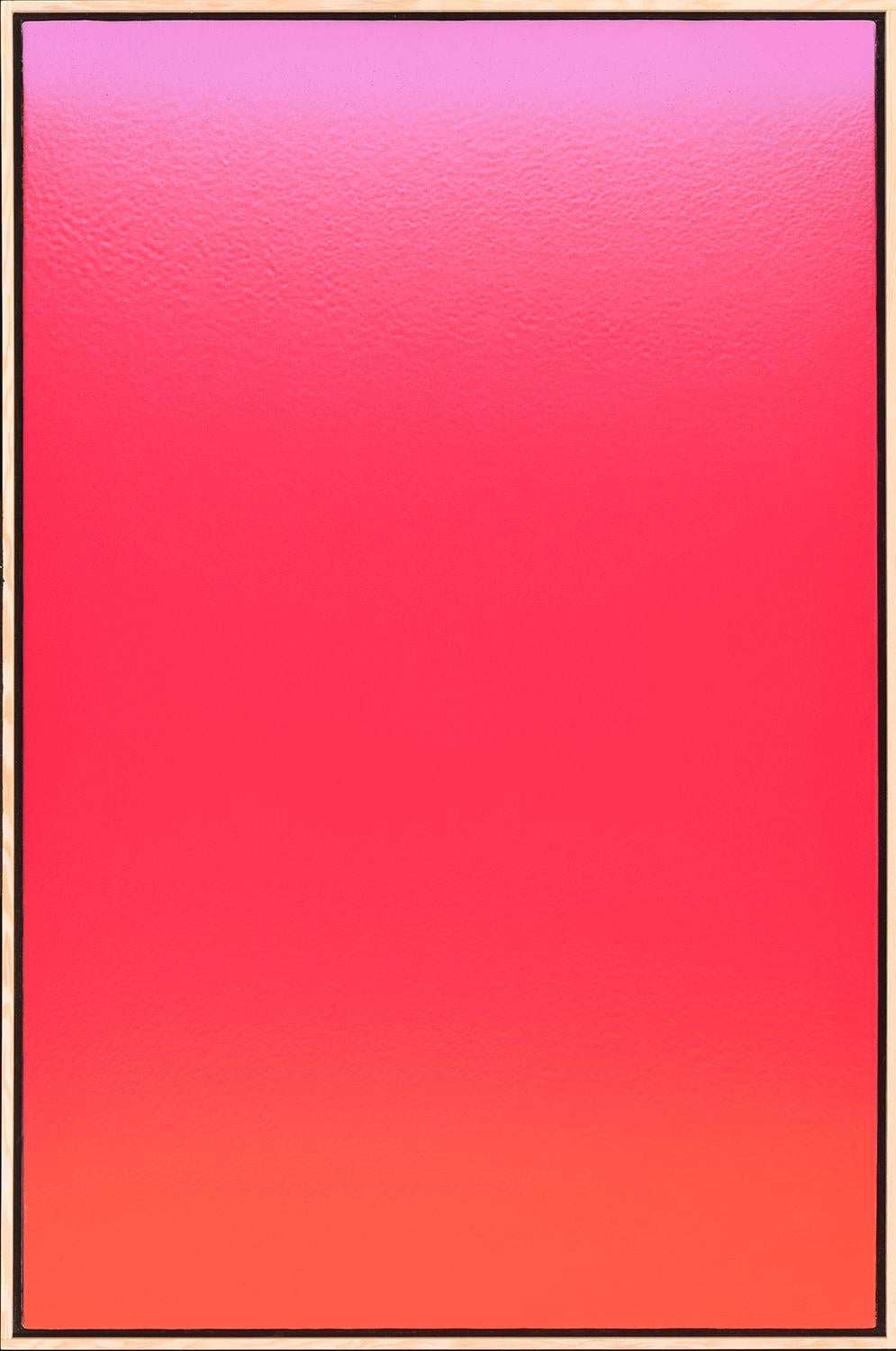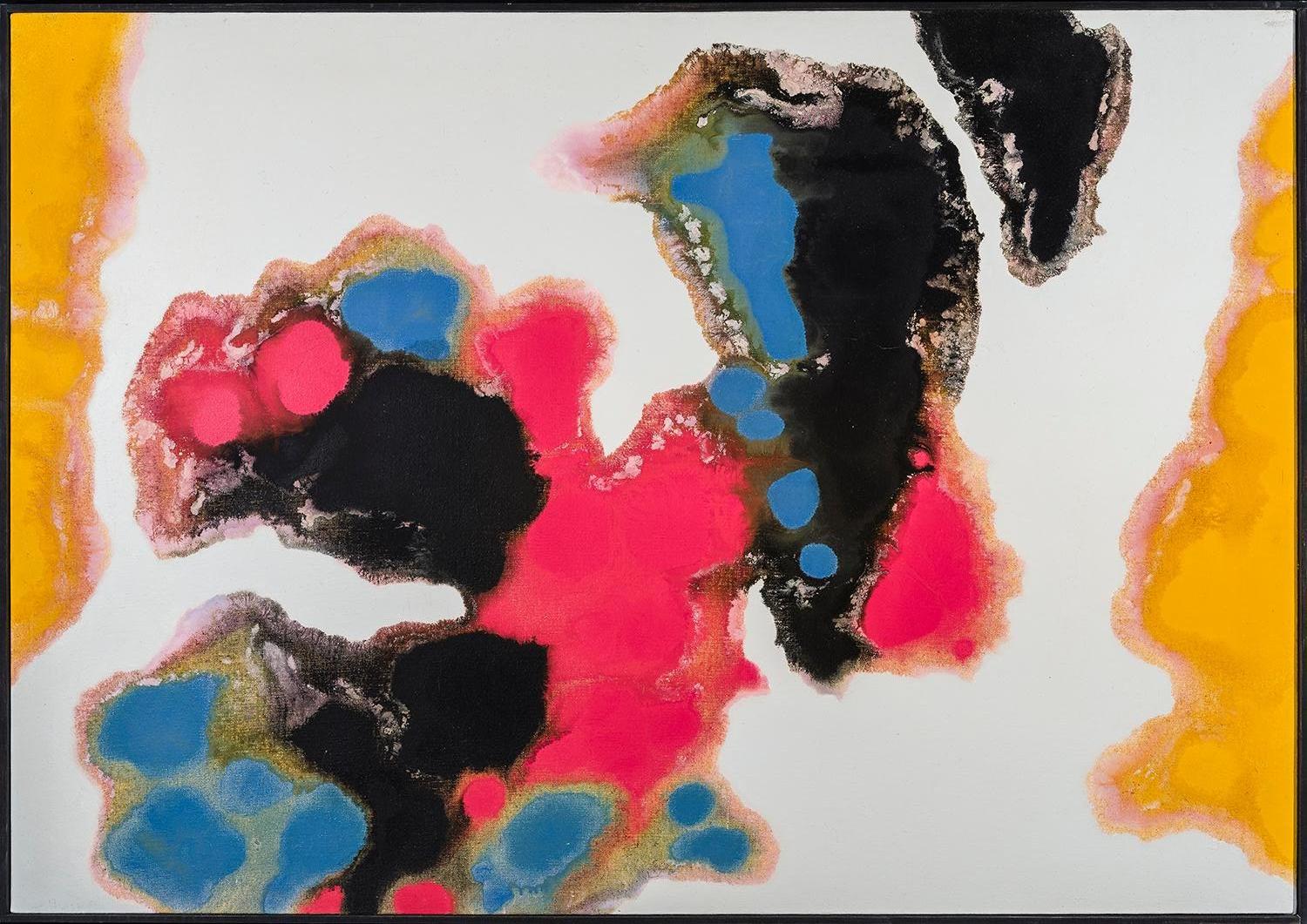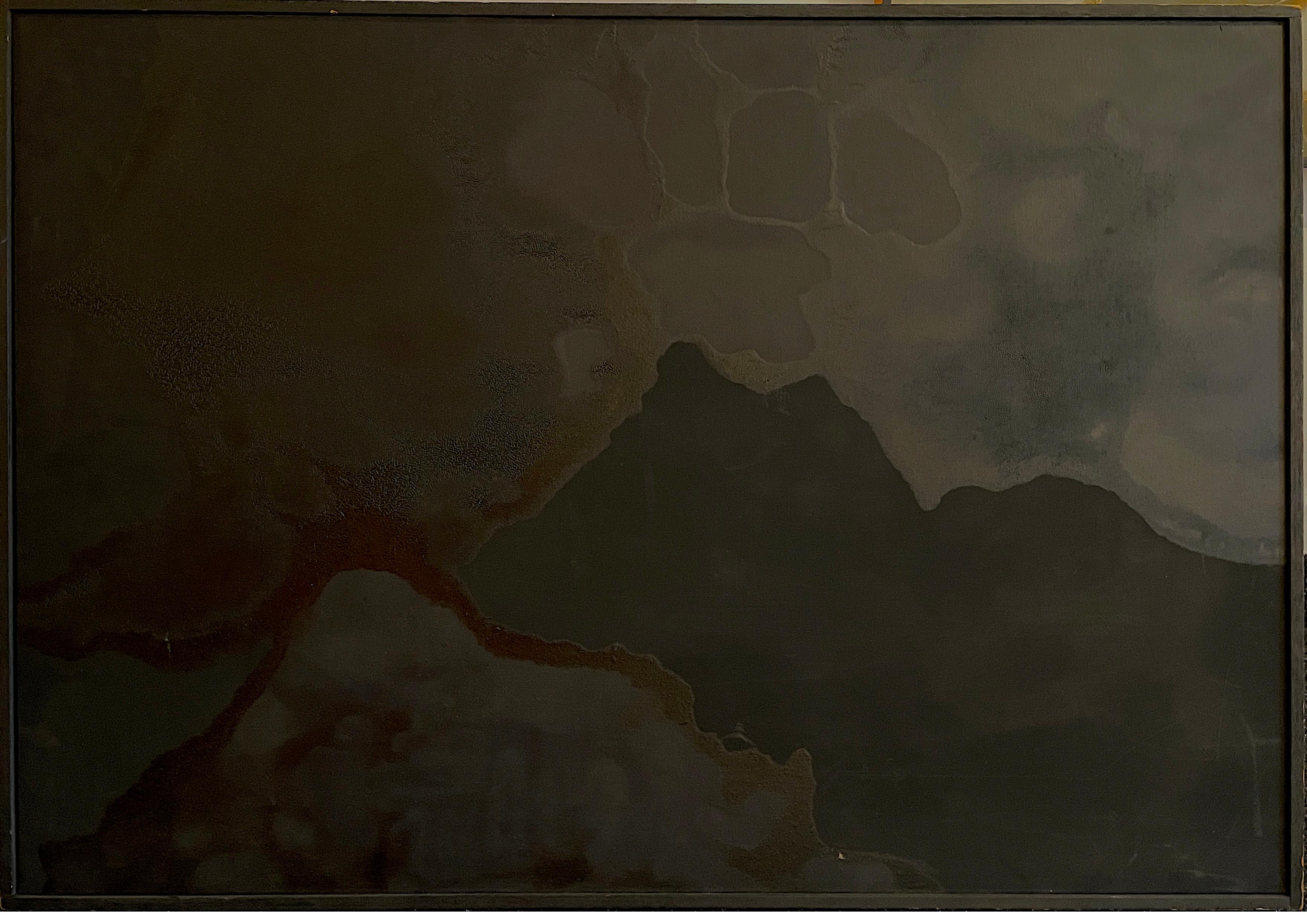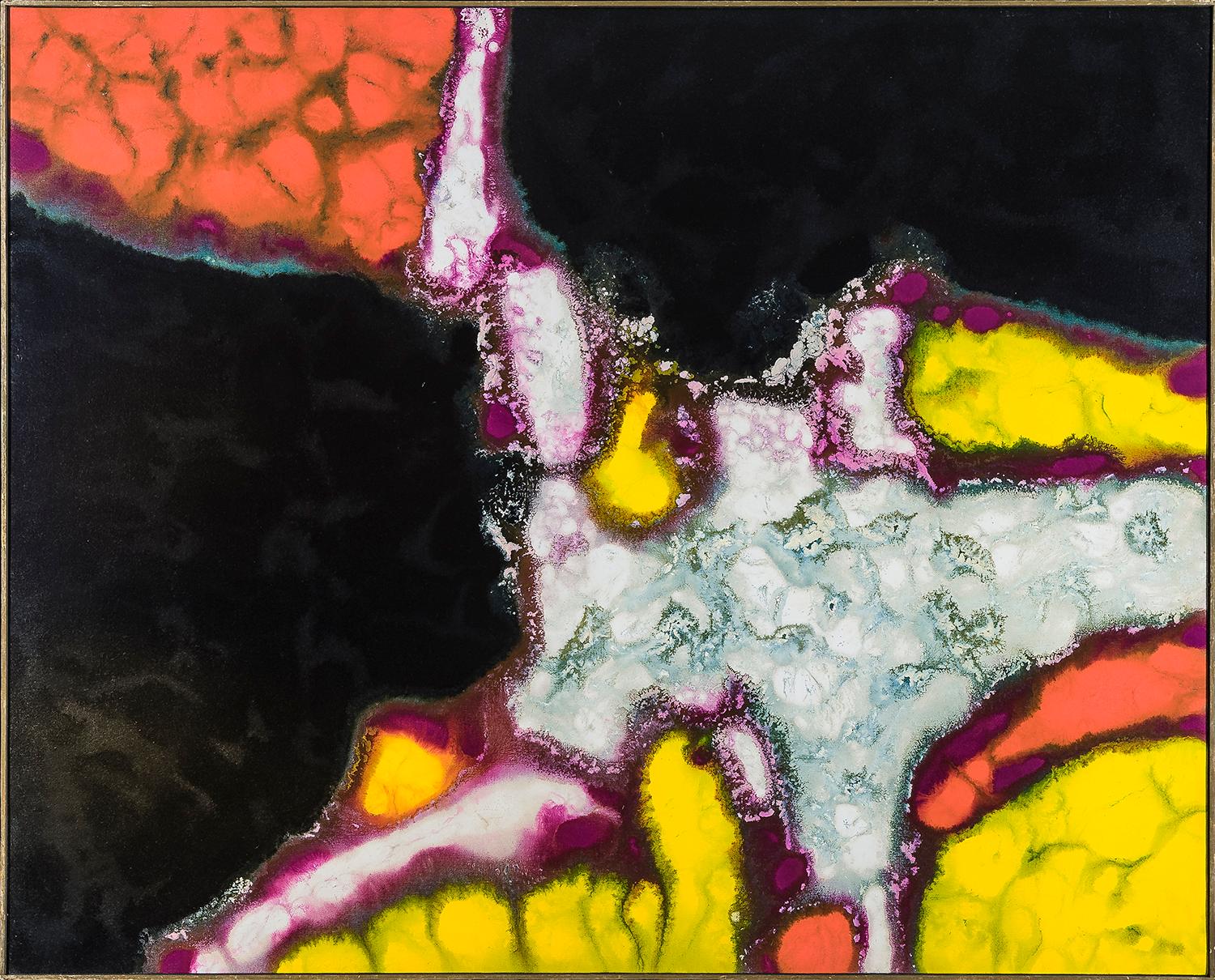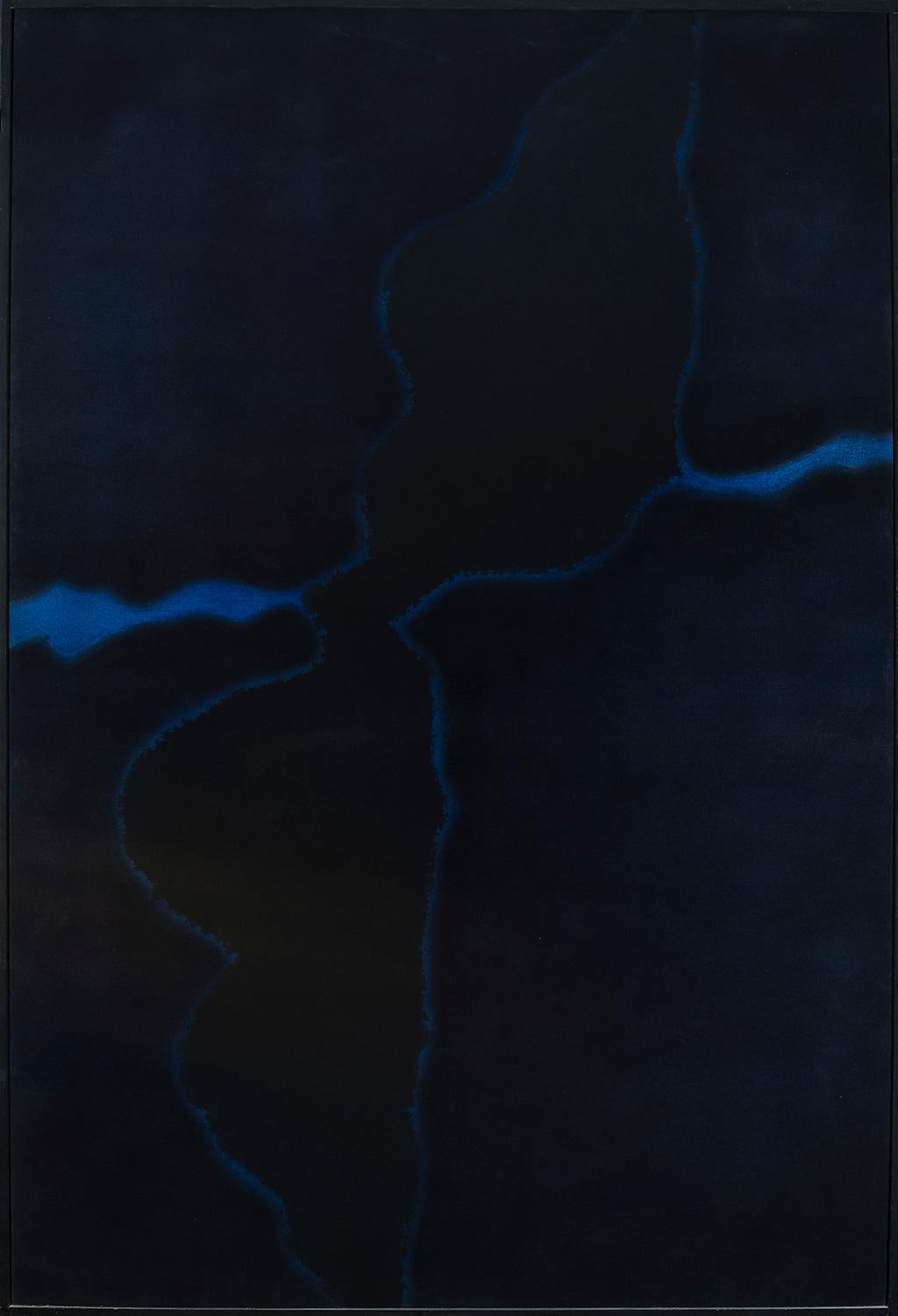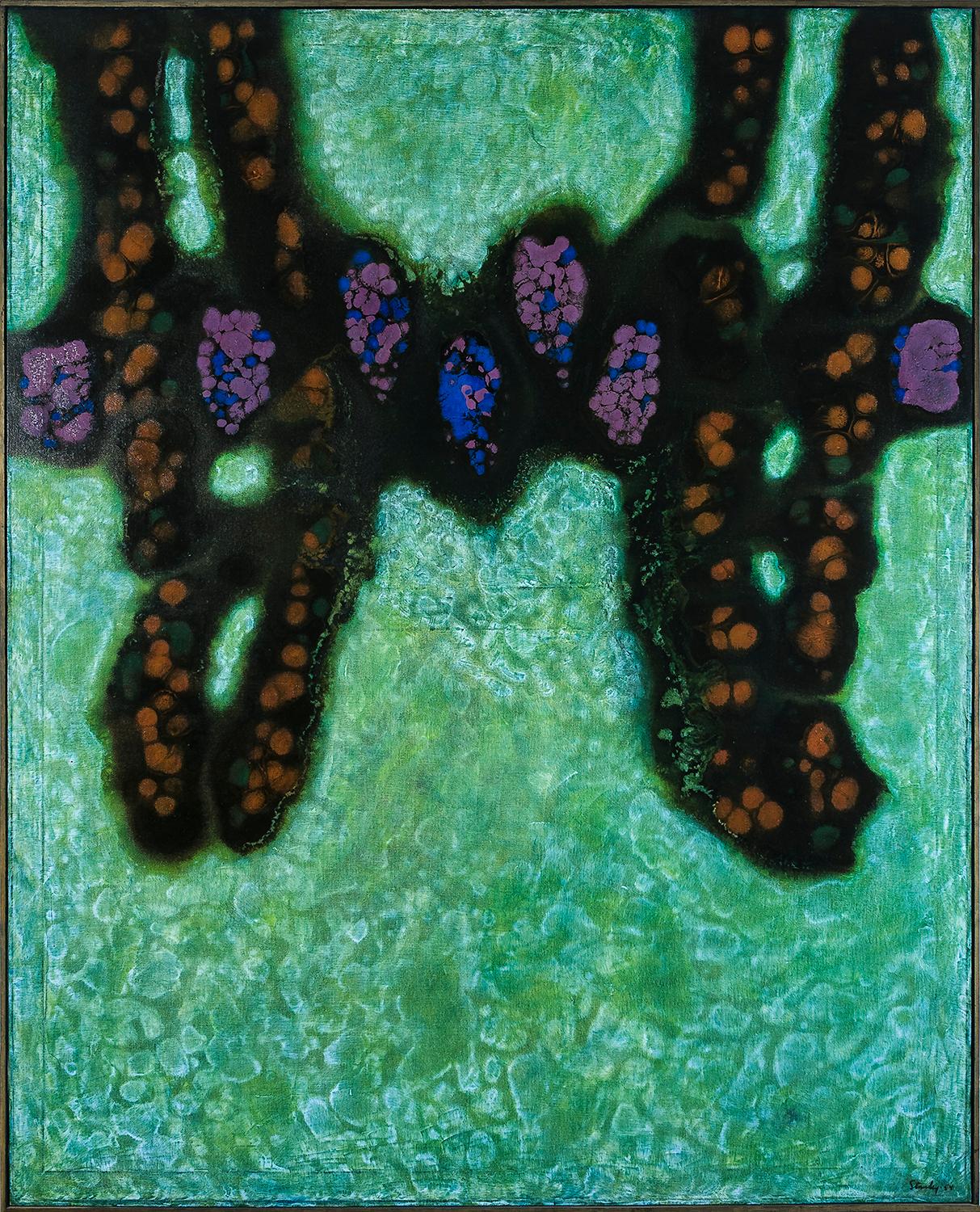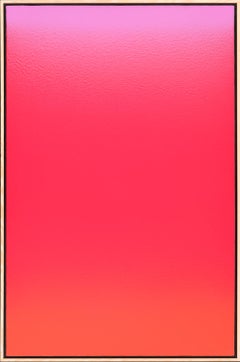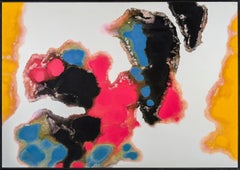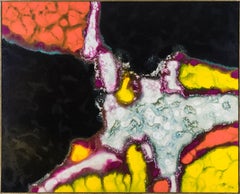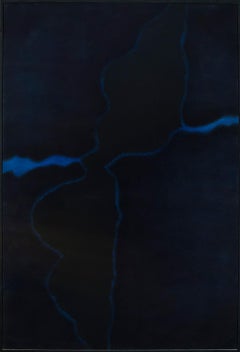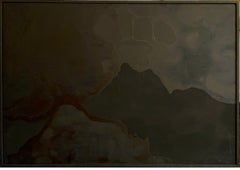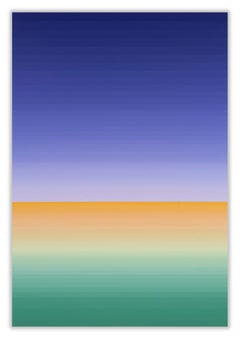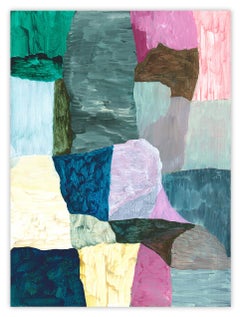Want more images or videos?
Request additional images or videos from the seller
1 of 4
Stanley Twardowicz#15-19841984
1984
$18,000
£13,584.11
€15,551.75
CA$25,385.97
A$27,870.63
CHF 14,540.17
MX$337,273.38
NOK 182,238.40
SEK 171,716.49
DKK 116,089.64
About the Item
Signed (on stretcher): Stanley/ Twardowicz
Stanley Twardowicz (1917–2008), a one-time orphan, Golden Gloves boxer, professional baseball player and auto worker, emerged from a hardscrabble upbringing in Detroit to become a popular and improbable denizen of New York’s Cedar Tavern, the flash pan of Abstract Expressionism in the 1950s. He landed on the cover of Art in America’s “New Talent Annual, 1958.” It was one highlight of an impressive run that included a 1956 Guggenheim Fellowship, group shows at the Whitney and Guggenheim museums, The Art Institute of Chicago, Carnegie Institute, and The Museum of Modern Art. The latter trumpeted its acquisition of a Twardowicz canvas in 1956 and later bought six of his photographs. His works are in the collection of numerous American institutions including, The Butler Institute of American Art, Youngstown, OH; Farnsworth Art Museum, Rockland, ME; Fogg Art Museum, Cambridge, MA; Hirshhorn Museum & Sculpture Garden, Washington, D.C.; Los Angeles County Museum of Art, CA; Milwaukee Art Museum, WI; Museum of Modern Art, NY; Newark Museum, NJ; the Smithsonian American Art Museum, Washington, D.C., and others.
- Creator:Stanley Twardowicz (1917-2008, American)
- Creation Year:1984
- Dimensions:Height: 43 in (109.22 cm)Width: 24 in (60.96 cm)
- Medium:
- Movement & Style:
- Period:
- Condition:
- Gallery Location:New York, NY
- Reference Number:Seller: M 10164D.0481stDibs: LU2310083502
About the Seller
5.0
Recognized Seller
These prestigious sellers are industry leaders and represent the highest echelon for item quality and design.
Established in 1952
1stDibs seller since 2010
35 sales on 1stDibs
Typical response time: 7 hours
Associations
Art Dealers Association of America
- ShippingRetrieving quote...Shipping from: New York, NY
- Return Policy
Authenticity Guarantee
In the unlikely event there’s an issue with an item’s authenticity, contact us within 1 year for a full refund. DetailsMoney-Back Guarantee
If your item is not as described, is damaged in transit, or does not arrive, contact us within 7 days for a full refund. Details24-Hour Cancellation
You have a 24-hour grace period in which to reconsider your purchase, with no questions asked.Vetted Professional Sellers
Our world-class sellers must adhere to strict standards for service and quality, maintaining the integrity of our listings.Price-Match Guarantee
If you find that a seller listed the same item for a lower price elsewhere, we’ll match it.Trusted Global Delivery
Our best-in-class carrier network provides specialized shipping options worldwide, including custom delivery.More From This Seller
View All#15-1979
By Stanley Twardowicz
Located in New York, NY
Signed (on stretcher): Twardowicz
Stanley Twardowicz (1917–2008), a one-time orphan, Golden Gloves boxer, professional baseball player and auto worker, emerged from a hardscrabble u...
Category
Late 20th Century American Modern Abstract Paintings
Materials
Canvas, Acrylic
No. 3 -1960
By Stanley Twardowicz
Located in New York, NY
Signed (on stretcher): Stanley Twardowicz
Stanley Twardowicz (1917–2008), a one-time orphan, Golden Gloves boxer, professional baseball player and auto worker, emerged from a hards...
Category
Late 20th Century American Modern Abstract Paintings
Materials
Enamel
No. 12-1957
By Stanley Twardowicz
Located in New York, NY
Stanley Twardowicz (1917–2008), a one-time orphan, Golden Gloves boxer, professional baseball player and auto worker, emerged from a hardscrabble upbringing in Detroit to become a po...
Category
Mid-20th Century Abstract Abstract Paintings
Materials
Enamel
No. 12-1962
By Stanley Twardowicz
Located in New York, NY
Signed (on verso): Stanley Twardowicz
Category
1960s Contemporary Abstract Paintings
Materials
Acrylic
No. 20-1954
By Stanley Twardowicz
Located in New York, NY
Stanley Twardowicz (1917–2008), a one-time orphan, Golden Gloves boxer, professional baseball player and auto worker, emerged from a hardscrabble upbringing in Detroit to become a po...
Category
Mid-20th Century Abstract Abstract Paintings
Materials
Enamel
The Air We Breathe 9
By Elizabeth Turk
Located in New York, NY
Charcoal and Getty Fire Ash on paper
Category
2010s Contemporary Abstract Drawings and Watercolors
Materials
Charcoal
You May Also Like
#24 oil by Stanley Twardowicz
By Stanley Twardowicz
Located in Hudson, NY
Artwork measures 29" x 43" and framed 30 3/4" x 44" x 2"
Signed "Stanley Twardowicz" verso.
Stanley Twardowicz's poured enamel and oil breakthrough works of the mid-1950's came as ...
Category
1960s Abstract Abstract Paintings
Materials
Canvas, Oil
Emotional Color Change 55 (Abstract Painting)
By Kyong Lee
Located in London, GB
This work will be shipped rolled.
Emotional Color Change series combines colour and language to visually represent the external environment. The process involves mixing two or three...
Category
2010s Abstract Abstract Paintings
Materials
Canvas, Acrylic
P51.2020 (Abstract Painting)
Located in London, GB
P51.2020 (Abstract Painting)
Acrylic on Hahnemuhle paper - unframed
Antony Densham, an abstract artist based in Aotearoa, New Zealand, is renowned for his distinctive approach to ca...
Category
2010s Abstract Abstract Paintings
Materials
Paper, Acrylic
P51.2020 (Abstract Painting)
Located in London, GB
P51.2020 (Abstract Painting)
Acrylic on Hahnemuhle paper - unframed
Antony Densham, an abstract artist based in Aotearoa, New Zealand, is renowned for his distinctive approach to ca...
Category
2010s Abstract Abstract Paintings
Materials
Paper, Acrylic
Emotional Color Change 34 (Abstract painting)
By Kyong Lee
Located in London, GB
Emotional Color Change 34 (Abstract painting)
Acrylic on canvas — Unframed.
Kyong Lee's series combines colour and language to visually represent the external environment. The proce...
Category
2010s Abstract Abstract Paintings
Materials
Paper, Acrylic, Pencil
Emotional Color Change 34 (Abstract painting)
By Kyong Lee
Located in London, GB
Emotional Color Change 34 (Abstract painting)
Acrylic on canvas — Unframed.
Kyong Lee's series combines colour and language to visually represent the external environment. The proce...
Category
2010s Abstract Abstract Paintings
Materials
Paper, Acrylic, Pencil, Canvas
More Ways To Browse
Vintage Baseball Gloves
Stanley American Modern
Abstract Geometric Painting Mid Century
Havana Cuba
Ontario Canada
American Modernist Paintings
Nature Abstract Paintings
Pastels On Canvas
Buffalo Art
Cubist Oil Paintings
Bright Abstract Painting
Abstract Painting 1959
Bright Abstract Art
Original Pastel Art
Santa Barbara Vintage
Cincinnati Art
Abstract Expressionism Black And White
One Of A Kind Collective
